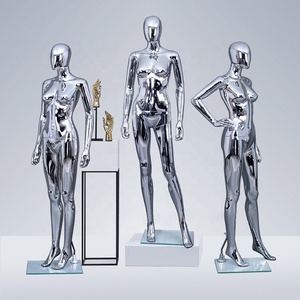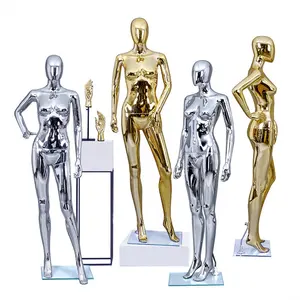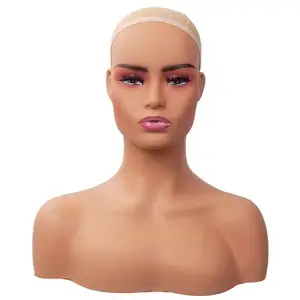The realistic mannequin has proven incredibly versatile in its applications, catering to various industries and settings. These lifelike figures authentically represent the human form, enhancing the overall experience and achieving multiple objectives.
Applications of a realistic mannequin
Realistic looking mannequins have long been a staple in the fashion retail industry. They are particularly well-suited for displaying clothing collections, allowing customers to visualize how the garments will fit and look on a natural person. They create visually appealing displays showcasing some of the latest trends, inspiring customers, and driving sales. Bridal boutiques benefit significantly from the use of a realistic female mannequin. Realistic mannequins can be customized to reflect different body types and sizes, ensuring every bride feels represented and confident in their attire. Mannequins that look real have become integral to art exhibitions, mainly installations and sculptures. Artists use these figures to convey emotions, tell stories, and explore the human condition. Realistic mannequins allow artists to create thought-provoking and visually striking pieces that captivate viewers and evoke emotions. Museums often rely on realistic mannequins to recreate historical scenes and provide a sense of context for exhibits. Whether a historical reenactment or a display showcasing traditional attire, these figures offer a realistic representation of individuals from different eras and cultures. Realistic mannequins help museum visitors connect with history more personally, fostering a deeper understanding and appreciation of the past. The lifelike mannequin has become an essential tool in medical training and simulation. Medical schools and training centers use these figures to simulate various medical scenarios, allowing students to practice skills in a realistic and controlled environment. Realistic mannequins can mimic human physiological responses, providing a valuable learning experience for future healthcare professionals.
Advantages of a realistic mannequin in the retail industry
One of the primary advantages of realistic mannequins is their ability to provide a lifelike representation of the human body. Whether a female or a realistic male mannequin, these figures accurately depict body proportions, allowing customers to visualize the clothes fit and look. This realistic representation enhances visual merchandising, creating visually appealing displays that showcase some of the latest fashion trends and attract customers. By presenting garments on mannequins that closely resemble the human form, customers can better understand the fit, style, and overall appeal of the items. A hyper realistic mannequin plays a crucial role in engaging customers emotionally. Retailers can create a sense of relatability and connection by showcasing figures that resemble real people. These mannequins can reflect diverse body types, ethnicities, and ages, promoting inclusivity and making customers feel represented. This emotional connection fosters a positive shopping experience and increases the likelihood of customers purchasing. Realistic mannequins excel in capturing the intricate details of clothing and accessories. From real mannequin heads showcasing hairstyles and makeup looks to lifelike mannequin hands highlighting jewelry and accessories, these figures draw attention to specific features. By presenting accessories in a realistic context, retailers can showcase these items' unique qualities and craftsmanship, increasing their desirability and sales potential.
As industries continue to evolve and seek innovative ways to engage customers and convey messages, the versatility and significance of realistic mannequins will continue to grow.











































 浙公网安备 33010002000092号
浙公网安备 33010002000092号 浙B2-20120091-4
浙B2-20120091-4